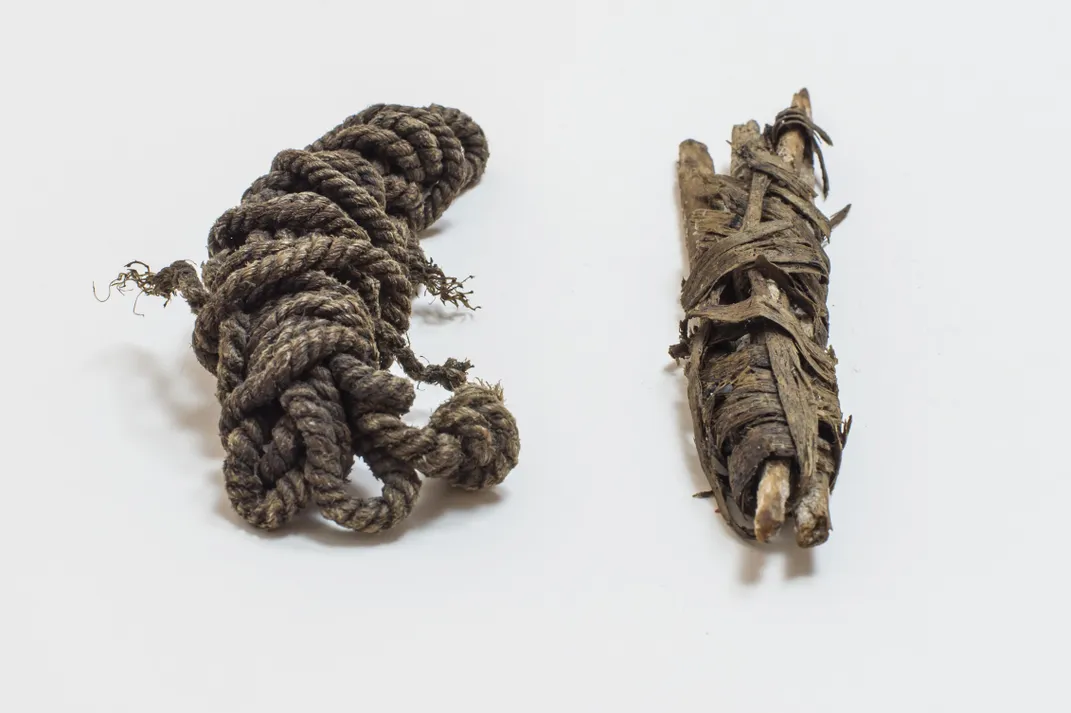What We Can Learn From Ötzi the Iceman’s Hunting Pack
The famed Copper Age mummy’s bowstring is the world’s oldest known specimen
/https://tf-cmsv2-smithsonianmag-media.s3.amazonaws.com/filer/73/2a/732a9263-a7ea-46f3-b0f8-85797b66849b/jan2_otzi3-arrows.jpg)
Ötzi the Iceman never had a chance to take his shot. When he was killed in the Alps some 5,300 years ago, his bow and most of his arrows were still works in progress.
A new study published in the Journal of Neolithic Archaeology takes a closer look at the Iceman’s hunting kit, which was impeccably preserved in a glacier until Ötzi’s discovery in 1991.
The ice “is like a deep freezer: Nothing spoils there, and the ice preserves for thousands of years,” says Albert Hafner, an archaeologist at the University of Bern and a co-author of the study, to Atlas Obscura’s Isaac Schultz.
Thanks to the glacier’s preservative properties, Ötzi’s weapons and tools, from his doeskin quiver to his feather-fletched arrows, kept their shape. Now, they’re the world’s oldest known hunting kit, stored at the South Tyrol Museum of Archaeology in Italy.

What really caught the researchers’ attention was the Iceman’s bowstring, loosely wrapped and stored in the quiver. Per a statement from the museum, prehistoric bowstrings are among the rarest archaeological finds. The oldest known bowstrings outside of Ötzi’s come from Egyptian graves dated to between 2200 and 1900 B.C., making the Iceman’s bowstring, dated to between 3300 and 3100 B.C, the oldest by a millennium.
Ötzi’s bowstring was made of three strands of animal sinew twisted into a cord, according to the new analysis.
“I don’t personally think that sinew is a really good material for bowstrings,” Jürgen Junkmanns, co-author of the study and an expert in ancient bow use, tells Schultz.
Although the material is inelastic and sensitive to water, he says, “Obviously the Stone Age hunters thought different.”

When stretched out over the length of the bow, the cord would have been between two to three millimeters thick. The notches of the two fully constructed arrows in Ötzi’s quiver, complete with flint arrowheads and three half-feathers glued to the arrows with birch tar, would have fit it perfectly. But the yew branch intended for the bow was only half-finished, and at roughly six feet long, significantly taller than its 5-foot-2 owner.
Ötzi probably intended to whittle his unfinished bow down further, shortening and thinning it to match his own height. But he never had the chance. As revealed by an X-ray in 2001, the Iceman was felled by an arrow to the left shoulder sometime during early summer.
To date, researchers have analyzed the clothes Ötzi wore, the mosses frozen with him, his last meal, his tattoos and even his voice. While the Iceman’s bad luck may have proven fatal for him, his death ultimately provided modern archaeologists with an unsurpassed window into Copper Age Europe.